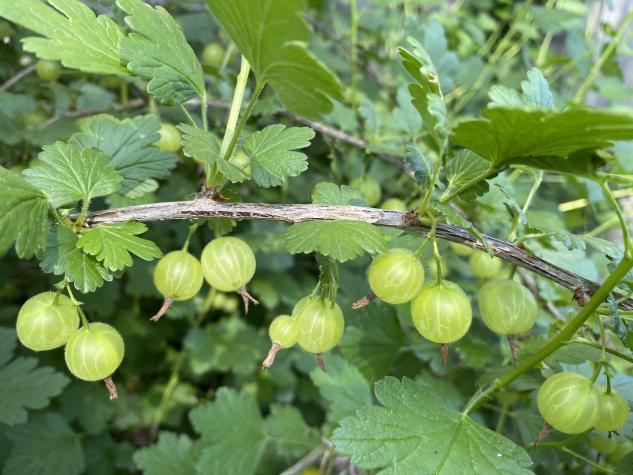COLUMBIA, Mo. – “Gooseberry grows as a small deciduous shrub with edible fruit,” says University of Missouri Extension horticulturist Michele Warmund.
Gooseberry clubs once popular
The European gooseberry is an ancient fruit that became popular in Europe and the United States in the 1800s and early 1900s. As early as the 1740s gooseberry clubs in Britain sponsored competitions with prizes for the largest or most flavorful fruit, says Warmund. These events sparked interest in developing new cultivars, and competitive growing of gooseberries spread throughout England and Scotland. However, gooseberry production declined during World War I and never regained the same level of popularity. Only a few gooseberry societies remain today.
Missouri gooseberry harvest is in June
In the United States, there are about 50 native species of the genus Ribes, including the American gooseberry. In Missouri, American gooseberry produces a fruit that is very tart at the immature, green stage when harvested in June, says Warmund. Gooseberries become sweeter when picked later.
Cooks use gooseberries alone or with other small fruits in pies, jams and sauces and to flavor beverages. The native Missouri gooseberry grows throughout the state, except for 10 counties primarily in southeastern Missouri. This wild species produces considerably smaller berries, about 1/4 inch in diameter, and the spines on shoots are usually longer than those of improved American gooseberry cultivars.
Gooseberry favors Missouri climate
American gooseberry grows well in Missouri, says Warmund. Plants survive winter temperatures and thrive under humid spring and summer conditions in full sun to partial shade. They need little maintenance except for annual dormant pruning, light fertilization and irrigation during droughty periods in summer.
Nurseries offer several hardy cultivars, but Pixwell consistently bears high fruit yields, says Warmund. Large-fruit-bearing European cultivars such as Hinnonmaki Red and Invicta grow in Missouri but are not as winter-hardy as American types.
Few pests damage American gooseberry in Missouri. Occasionally, aphids eat the foliage, stinkbugs scar the fruit, and fungal diseases can infect plants. For more information, search MU’s Integrated Pest Management website for “gooseberry” at ipm.missouri.edu.
To prevent infections, select disease-resistant gooseberry cultivars and allow adequate space between plants. When plants are at least 3 years old, thin out some of the larger branches annually during dormant pruning to promote rapid drying of foliage later in the growing season.
Also, remove weeds that compete with plants for moisture and light. Harvest frequently to prevent fruit rot and remove dead foliage beneath plants, where pathogens can overwinter. In rare cases, fungicides may be warranted.
Photo available:
Gooseberries
American gooseberry fruit at the immature stage ready for harvest. Photo by Michele Warmund.
